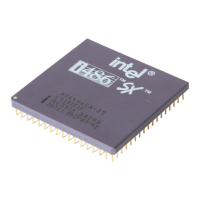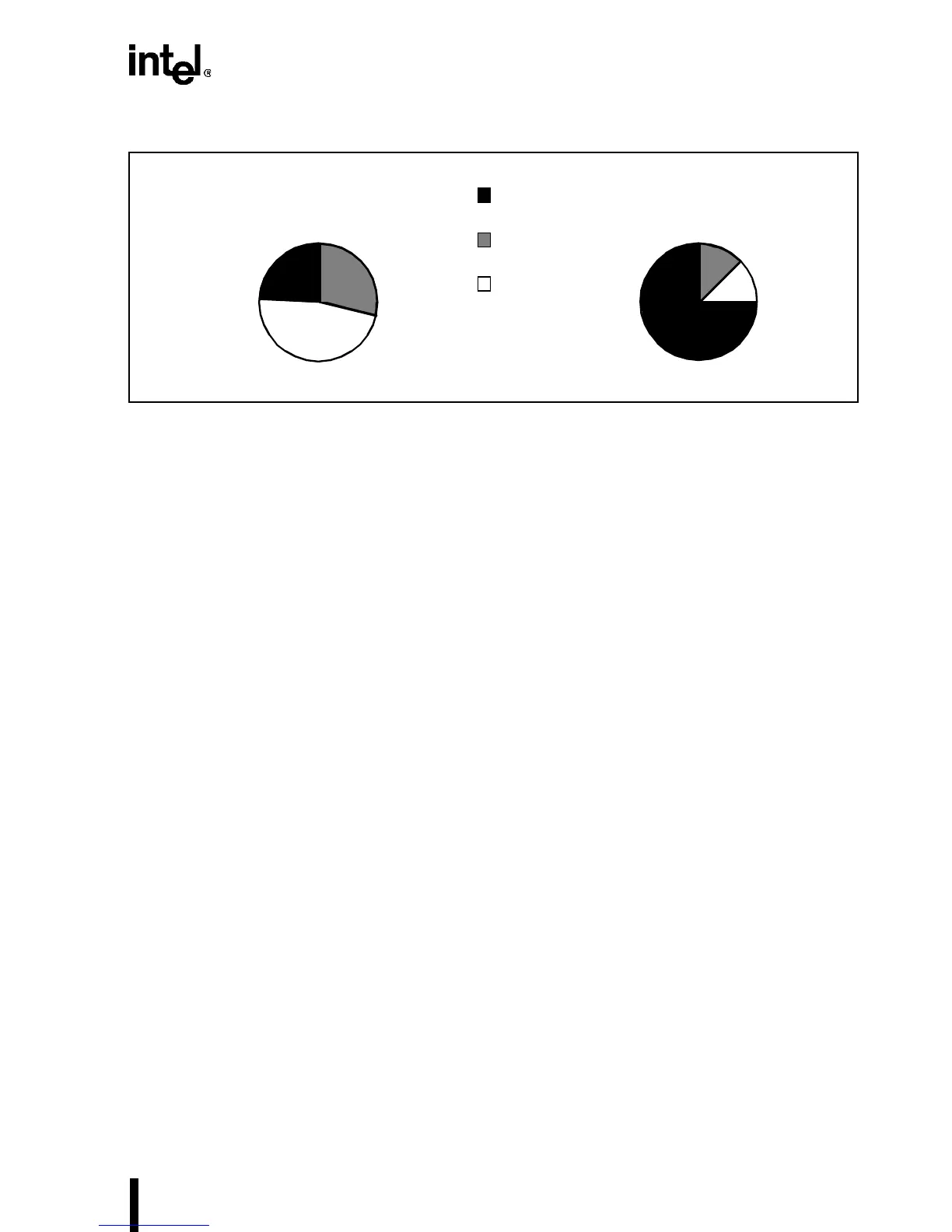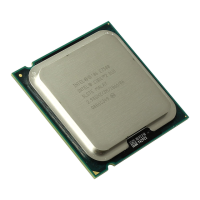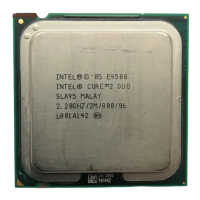5-5
MEMORY SUBSYSTEM DESIGN
Figure 5-3. Intel386™ Processor Bus Cycle Mix/Intel486™ Processor Bus Cycle Mix
It seems obvious that many of these write cycles would be consecutive. In fact, 70% of all write
cycles are consecutive. Furthermore, 50% of all write cycles occur three in-a-row. It is obvious
from these statistics that optimizing the memory subsystem for write cycles can improve perfor-
mance. But it is important to optimize the memory system for consecutive write cycles. Improv-
ing individual write cycle latency does not buy much performance improvement if subsequent
write cycles suffer.
5.2.4 Improving Write Cycle Latency
5.2.4.1 Interleaving
The interleaving technique is used to support the burst bus feature of the Intel486 processor. The
use of this technique allows the DRAM to supply a dword every clock during burst cycles. Inter-
leaving proves to be very useful in Intel486 processor memory designs. Without its use, DRAM
timings such as T
PC
(Page Mode Cycle time) and T
CP
(CAS Precharge time) would prevent zero
wait state access at 33 MHz.
5.2.4.2 Write Posting
Analysis has shown that, in general, 6% degradation in performance can be expected for every
additional wait state added to write cycles. This analysis was performed by measuring the CPU
clocks required to execute several applications.
A technique called write posting can be used to improve write cycle latency. Write posting uses
data registers that hold write data during write cycles. This technique allows consecutive write
cycles to be overlapped. It also allows write cycles to be overlapped with L2 cache cycles and
reduces overall write miss latency.
Using the write posting technique adds complexity to the system logic. It is important to deter-
mine the performance improvement realized by using this technique. This question is especially
pertinent when we consider the logic already implemented in the Intel486 processor to improve
write performance. The internal Intel486 write buffers decouple the processor execution unit
from the external bus.
21.65%
35.90%
42.45%
74.84%
12.79%
12.37
Write
Prefetch
Read
Intel386™ Bus Cycle Mix Intel486™ Bus Cycle Mix

